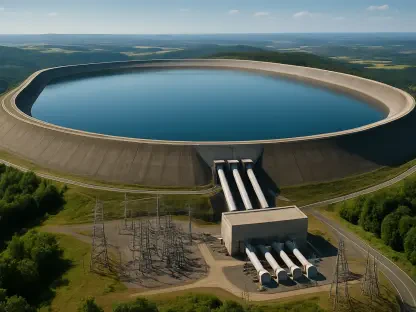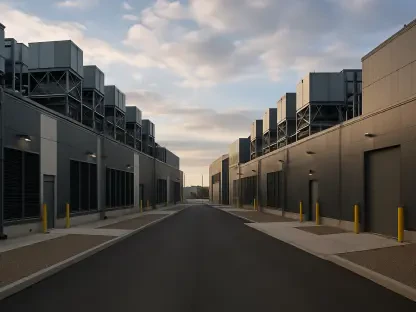As U.S. electricity demand is scheduled to increase by over 15% within the next four years, the pressing question arises: Will competitive power markets or monopoly utilities drive the evolution of the electric grid? Rising electric rates and projected surges in natural gas costs underline the urgency to evaluate the future structure of energy investments. While policies at various governmental levels emphasize this crucial decision, the dynamics of power competition offer a promising alternative to monopoly-controlled markets.
Current Landscape and Growth of Competitive Power Markets
Analyzing Recent Data and Growth Trends
Recent data illuminates the escalating trajectory of competitive power markets, driven substantially by independent power producers (IPPs) entering the fray. Established in the 1990s, these markets were strategically designed by the Federal Energy Regulatory Commission (FERC) to foster competition, allowing IPPs to penetrate a landscape traditionally dominated by utilities. Notably, the Electric Reliability Council of Texas (ERCOT) exemplifies this trend, having added 44 gigawatts of energy generation in the last four years—primarily from solar, wind, and battery storage assets. This growth is positioning ERCOT’s wholesale electricity costs lower than anticipated for this summer compared to the following year, highlighting the competitive advantage of diversifying energy resources.
Real-World Applications and Case Studies
The pivotal influence of competitive power markets becomes more tangible when examining ERCOT, a model case study where the streamlined regulatory environment allows innovation and robust load growth. As ERCOT’s market structure supports IPPs in implementing advanced energy resources, the market not only meets escalating demand but also enhances consumer affordability. Companies leading in this space have not only deployed solar and wind solutions but have also reinforced grid reliability through advanced battery storage systems, ensuring a more resilient energy infrastructure.
Insights from Industry Experts
Industry veterans and thought leaders articulate the dual challenges and advantages inherent in the competitive power market framework. Experts emphasize that, while competitive markets stimulate innovation and investment, the effectiveness hinges significantly on regulatory clarity and equity in market access. Thought leaders consistently warn against potential hindrances posed by monopolies and advocate for sustained regulatory support to ensure these markets’ vitality. Industry consensus underscores that while competitive markets promise lower costs and improved efficiency, overcoming inherent infrastructural and administrative hurdles remains critical to unlocking their full potential.
Future Directions and Implications
The trajectory of competitive power markets presents a landscape of both opportunities and challenges looking ahead. On the horizon, continued technological advancements promise to further invigorate IPPs’ role in meeting increasing electricity demands, propelling economic growth across multiple industries. However, potential regulatory and infrastructural bottlenecks, particularly concerning interconnection delays and outdated systems, could impede progress. Market decisions around structure and competition will likely set significant precedents for the broader energy sector, with choices made today impacting energy affordability and sustainability tomorrow.
Conclusion
In summation, the evolution of competitive power markets has fostered substantial innovation and investment, offering a compelling alternative to monopolistic models in addressing the growing electricity demands. While past advancements have demonstrated the potential of IPPs and a competitive framework to drive progress, future considerations emphasize the need for consistent regulatory support, infrastructural modernization, and equitable market conditions. As stakeholders navigate these complexities, the actions taken now will fundamentally shape the trajectory of the U.S. electricity market and broader energy landscape in the years to come.









